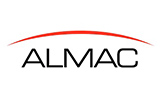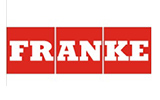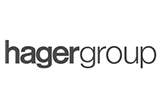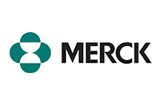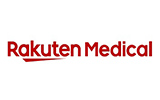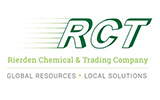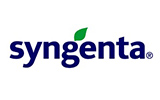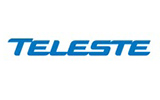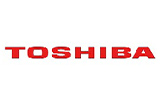1. Research Framework
1.1. Research Objective
1.2. Product Overview
1.3. Market Segmentation
2. Executive Summary
3. GCC Refrigerated Transport Market Insights
3.1. Industry Value Chain Analysis
3.2. DROC Analysis
3.2.1. Growth Drivers
3.2.1.1. Rising Demand for Perishable Goods
3.2.1.2. E-commerce Boom
3.2.1.3. Expansion of Healthcare Industry
3.2.2. Restraints
3.2.2.1. High Initial Investment
3.2.2.2. Rising Fuel Costs
3.2.3. Opportunities
3.2.3.1. Increasing Consumer Awareness of Food Safety
3.2.3.2. Advancement in Technology
3.2.4. Challenges
3.2.4.1. Complex Supply Chain Management
3.2.4.2. Infrastructure Challenges
3.3. Technological Advancements/Recent Developments
3.4. Regulatory Framework
3.5. Porter's Five Forces Analysis
3.5.1. Bargaining Power of Suppliers
3.5.2. Bargaining Power of Buyers
3.5.3. Threat of New Entrants
3.5.4. Threat of Substitutes
3.5.5. Intensity of Rivalry
4. GCC Refrigerated Transport Market: Marketing Strategies
5. GCC Refrigerated Transport Market Overview
5.1. Market Size & Forecast, 2025-2033
5.1.1. By Value (USD Million)
5.2. Market Share & Forecast
5.2.1. By Transport Mode
5.2.1.1. Railways
5.2.1.2. Airways
5.2.1.3. Roadways
5.2.1.4. Waterways
5.2.2. By Technology
5.2.2.1. Vapor Compression Systems
5.2.2.2. Air-Blown Evaporators
5.2.2.3. Eutectic Devices
5.2.2.4. Cryogenic Systems
5.2.3. By Temperature
5.2.3.1. Single-Temperature
5.2.3.2. Multi-Temperature
5.2.4. By Application
5.2.4.1. Chilled Food Products
5.2.4.2. Frozen Food Products
5.2.5. By Country
5.2.5.1. Saudi Arabia
5.2.5.2. UAE
5.2.5.3. Qatar
5.2.5.4. Kuwait
5.2.5.5. Oman
5.2.5.6. Bahrain
6. Saudi Arabia Refrigerated Transport Market
6.1. Market Size & Forecast, 2025-2033
6.1.1. By Value (USD Million)
6.2. Market Share & Forecast
6.2.1. By Transport Mode
6.2.2. By Technology
6.2.3. By Temperature
6.2.4. By Application
7. UAE Refrigerated Transport Market
7.1. Market Size & Forecast, 2025-2033
7.1.1. By Value (USD Million)
7.2. Market Share & Forecast
7.2.1. By Transport Mode
7.2.2. By Technology
7.2.3. By Temperature
7.2.4. By Application
8. Qatar Refrigerated Transport Market
8.1. Market Size & Forecast, 2025-2033
8.1.1. By Value (USD Million)
8.2. Market Share & Forecast
8.2.1. By Transport Mode
8.2.2. By Technology
8.2.3. By Temperature
8.2.4. By Application
9. Kuwait Refrigerated Transport Market
9.1. Market Size & Forecast, 2025-2033
9.1.1. By Value (USD Million)
9.2. Market Share & Forecast
9.2.1. By Transport Mode
9.2.2. By Technology
9.2.3. By Temperature
9.2.4. By Application
10. Oman Refrigerated Transport Market
10.1. Market Size & Forecast, 2025-2033
10.1.1. By Value (USD Million)
10.2. Market Share & Forecast
10.2.1. By Transport Mode
10.2.2. By Technology
10.2.3. By Temperature
10.2.4. By Application
11. Bahrain Refrigerated Transport Market
11.1. Market Size & Forecast, 2025-2033
11.1.1. By Value (USD Million)
11.2. Market Share & Forecast
11.2.1. By Transport Mode
11.2.2. By Technology
11.2.3. By Temperature
11.2.4. By Application
12. Competitive Landscape
12.1. List of Key Players and Their Offerings
12.2. GCC Refrigerated Transport Company Market Share Analysis, 2023
12.3. Competitive Benchmarking, By Operating Parameters
12.4. Key Strategic Developments (Mergers, Acquisitions, Partnerships, etc.)
13. Impact of Escalating Geopolitical Tension on GCC Refrigerated Transport Market
14. Company Profile (Company Overview, Financial Matrix, Competitive Landscape, Key Personnel, Key Competitors, Contact Address, Strategic Outlook, SWOT Analysis)
14.1. Carrier Transicold
14.2. Thermo King
14.3. Daikin
14.4. Zanotti
14.5. Frigobloc
14.6. Schneider National, Inc.
14.7. C.H. Robinson Worldwide, Inc.
14.8. Kuehne + Nagel
14.9. Wabash National Corporation
14.10. Other Prominent Players
15. Key Strategic Recommendations
16. Research Methodology
16.1. Qualitative Research
16.1.1. Primary & Secondary Research
16.2. Quantitative Research
16.3. Market Breakdown & Data Triangulation
16.3.1. Secondary Research
16.3.2. Primary Research
16.4. Breakdown of Primary Research Respondents, By Country
16.5. Assumptions & Limitations
*Financial information of non-listed companies can be provided as per availability.
**The segmentation and the companies are subject to modifications based on in-depth secondary research for the final deliverable


